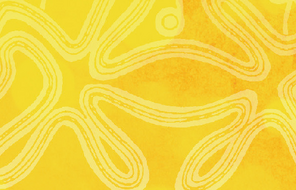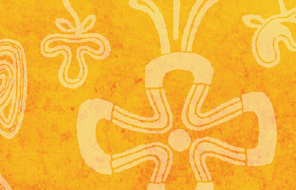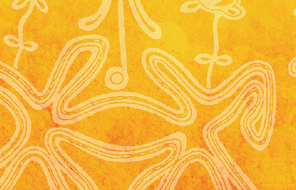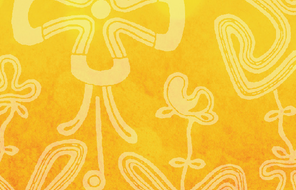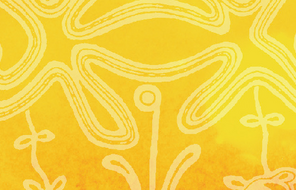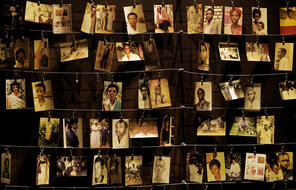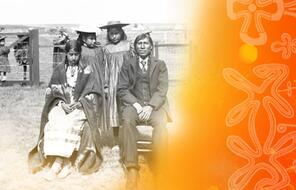Who Are The Indigenous Peoples of Canada?
Framing the global effects of colonialism, Canadian scholar David MacDonald states that “Indigenous peoples have undergone profound hardship and destruction during centuries of western colonialism. Currently, forty percent of the world’s countries contain Indigenous nations, who collectively comprise 370 million people or 5% of the world’s population, divided among over 70 states.” 1 This guide attempts to engage learners in key processes that catastrophically impacted the Indigenous Peoples of Canada.
Aboriginal Peoples — the official and legal term for the Indigenous populations in Canada, including First Nations , Métis , and Inuit —have lived in what is now North America for many millennia. In Canada the legal term for these nations is Aboriginal Peoples, although some prefer the term Indigenous Peoples. The term Indians is considered offensive and incorrect by many members of this group. There were no “Indians” before contact with Europe. When Europeans arrived, they believed that they had landed in what is present-day India and began to use this name to describe the local communities: nations of people that lived in both migratory and in permanent, self-sufficient societies. At the start of the sixteenth century, Europeans began to settle the east shores of North America. But more intrusive interactions with the inhabiting nations and colonial efforts to fully settle Canada began two centuries later. Along the way, the term Indians came into widespread use among the settlers, alongside thousands of terms and names that forever altered the social and natural landscape of North America. Ultimately, the name served to differentiate between Indigenous Peoples and the settlers, who referred to themselves as Europeans, whites, and, finally, Canadians. It lumped together the entire local population, disregarding its extraordinary diversity (there are, for example, more than 60 distinct Indigenous languages today). 2 As you will see in this guide, the loaded term Indian was employed in the spread of disparaging and degrading images of Indigenous Peoples that have contributed to the discrimination against them. To this day, Hollywood films, public figures, and other media routinely exploit false notions of who the Indigenous Peoples are and circulate harmful prejudice and stereotypes that are rooted in this experience. 3
- 1Jeff Corntassel and Cheryl Bryce, “Practicing Sustainable Self-Determination: Cultural Restoration and Revitalization,” Brown Journal of World Affairs 17 (2012), 151; David B. MacDonald, Identity Politics in the Age of Genocide: The Holocaust and Historical Representation (New York: Routledge, 2008), 61. We thank Dr. MacDonald for his enormous help with this guide and for this and many other suggestions.
- Aboriginal PeoplesAboriginal: Stemming from the mid-seventeenth-century Latin term aborigines, meaning “original inhabitants,” Aboriginal is the preferred legal term in Canada for the large and diverse grouping of First Nation, Métis, and Inuit nations. It is used synonymously with the term indigenous in various parts of Canada.
- First NationsFirst Nations have lived in North America for tens of thousands of years. Today, the term refers to some 617 different communities, traditionally composed of groups of 400 or so. These nations enjoy a richness and diversity of identity, culture, and customs. Many view North America as their traditional homeland and do not recognize aspects of US and Canadian sovereignty. Alongside the Métis and Inuit Peoples, First Nations are part of a larger grouping officially called the Aboriginal Peoples of Canada.
- MétisMétis: The term broadly describes descendants of mixed European and First Nations ancestry. In a narrow sense, Métis refers only to the descendants of First Nations people and French settlers in Manitoba. The history of the Métis reflects the intermingling of their different ways of life during the seventeenth- and eighteenth-century North American fur trade. Eventually, these descendants developed distinct language, culture, and traditions.
- InuitInuit: The term Inuit refers broadly to the Indigenous population of Alaska, Canada, and Greenland. Inuit means “people,” and the language they speak in the Canadian Arctic is called Inuktitut. For centuries, these communities have relied on their natural resources, strong leaders, and innovative tools and skills to survive in the Arctic north. Today, the Inuit communities of Canada live in the Inuit Nunangat, the Inuit homeland, and the region is divided into four territories. Indian: When the first European explorers landed in the Americas in 1492 with Christopher Columbus, they referred to the entire Indigenous population on the continent as “Indians” because they believed that they had arrived in India. The term came into widespread use among the settlers, and it lumped together entire local populations, disregarding their extraordinary diversity. Ultimately, the name Indian served to differentiate between Indigenous Peoples and the settlers, who referred to themselves as Europeans, whites, and, finally, Canadians.
- IndiansIndians: When the first European explorers landed in the Americas in 1492 with Christopher Columbus, they referred to the entire Indigenous population on the continent as “Indians” because they believed that they had arrived in India. The term came into widespread use among the settlers, and it lumped together entire local populations, disregarding their extraordinary diversity. Ultimately, the name Indian served to differentiate between Indigenous Peoples and the settlers, who referred to themselves as Europeans, whites, and, finally, Canadians.
- 2 “Aboriginal Languages of Canada,” Historica Canada website, accessed March 4, 2015, “Aboriginal languages in Canada,” Statistics Canada website, accessed March 3, 2015.
- 3For a classic study of the depiction of Indigenous Peoples in Canada, see Daniel Francis, The Imaginary Indian: the Image of the Indian in Canadian Culture (Vancouver: Arsenal Press, 1992); see also Robert Harding, “The Media, Aboriginal People and Common Sense,” Canadian Journal of Native Studies 25 (2005), 311–33; “Common Portrayals of Aboriginal People,” Media Smart website, accessed May 11, 2015. Cree filmmaker Neil Diamond’s film Reel Injun (2010) also explores prejudicial depictions of individuals in Hollywood film.



